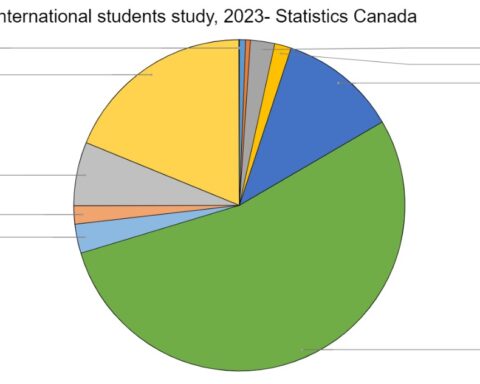Twenty-five per cent of Canadian MPs in the 41st parliament were women. While this proportion has doubled since the 1990s, Canada still lags behind other similar countries in terms of female representation including the United Kingdom, Sweden, Iceland, and Spain.
Even more significantly, the number of visible minority female MPs in parliament is four per cent, compared to a visible minority proportion of 10 per cent in the general population.
There are a number of explanations for why women, particularly ethnic women, have such limited representation. Research suggests some reasons are personal. Women have family responsibilities or are generally disinterested in politics.
Similarly, women may be disinterested in running for office because of the nastiness of politics and campaigning. Researchers have found through survey data that women “are less likely than men to be interested in politics and are less knowledgeable about the formal political arena.”
Others look at the electoral process.
Rigid party platforms
Women may identify with the federal parties less than men because of rigid party platforms and are therefore dissuaded from joining the political parties that could get them elected. In addition, it is suggested that women are less ‘electable’ than men running in similar ridings. It rests on the gender perception that sees women as less viable leaders than men.
Along these lines, parties may have a tendency to use women as ‘sacrificial lambs,’ where parties nominate women in hard-to-win ridings, in order to fit their quotas for female candidates. Research shows in the 2008 and 2011 federal elections, “women were more likely than men to be nominated in a riding where their party’s support was unstable, shrinking, or non-existent.”
Men, by contrast, were more likely than women to be nominated to run in party strongholds.
Star candidates
Yet, sometimes when parties nominate women, it could also be a star candidate nominated in a high-profile riding – think Chrystia Freeland in University-Rosedale in Toronto.
Despite this wealth of research, the explanations have very little to say about visible minority female candidates. Are they also ‘sacrificial lambs’ or is there another story to tell?
Men, by contrast, were more likely than women to be nominated to run in party strongholds.
Party nominations
In this election, the three major political parties are on par with expectations for female representation. The Liberals and NDP have met commitments to having women represent one-third to one-half of all candidates.
Table 1: Female Candidates in Each Political Party
| Conservatives | Liberals | NDP | |
| Total Candidates | 255 | 336 | 329 |
| Female Candidates | 64 | 106 | 140 |
| Percentage of female Candidates | 25% | 32% | 43% |
Note: Data collected from official party candidate websites
Yet, the number of visible minority female candidates as a proportion of total candidates tells a very different story. Both the Liberals and NDP have over 20 candidates that are both female and visible minorities. These numbers show that the Conservatives have the smallest proportion of female visible minority candidates.
Table 2: Visible Minority Female Candidates in Each Political Party
| Conservatives | Liberals | NDP | |
| Total Candidates | 255 | 336 | 329 |
| Visible Minority Female Candidates | 10 | 22 | 23 |
| Visible minority female Candidates as a percentage of total candidates | 4% | 6.5% | 7% |
Note: Data collected from official party candidate websites
The NDP are shown to be the most representative party with the highest inclusion of visible minority female candidates. Yet, visible minority female candidates as a proportion of all female candidates tells a different story.
Table 3: Visible Minority Female Candidates in Each Political Party
| Conservatives | Liberals | NDP | |
| Female Candidates | 64 | 106 | 140 |
| Visible Minority Female Candidates | 10 | 22 | 23 |
| Percentage of female Candidates | 16% | 21% | 16% |
Note: Data collected from official party candidate websites
Why Do These Numbers Matter and why are Visible Minority Female Candidates Selected?
Visible minority female candidates are significantly under-represented amongst all candidates running in this election. Even as a proportion of female candidates, only the Liberals come close to matching the proportions in the general public.
Party-wise tally
There is no conclusive evidence that the Conservatives can be accused of putting its ethnic women candidates in a “sacrificial lamb” position. Of the 10 minority female candidates running for the Conservatives, four are incumbents running for their former seats, including Nina Grewal, Alice Wong, Wai Young and Leona Aglukkaq – all of which are considered very winnable seats.
Even as a proportion of female candidates, only the Liberals come close to matching the proportions in the general public.
Four of the 10 minority women candidates are running in brand new ridings, where there is no traditionally elected party in the region. For the Conservatives, in only one case, Scarborough-Agincourt’s Bin Chang is running in long-time Liberal riding (current incumbent is Arnold Chan).
In contrast, Liberal party ethnic female candidates are facing a much harder battle. While seven of these candidates are running in new ridings, 13 are running in ridings traditionally held by the NDP or Conservatives, suggesting their chances of success are less than others. Only two minority candidates are running in traditionally Liberal ridings, with high winnability.
The NDP exhibits a mix of the Liberal and Conservative strategies.
Further, all three parties have also exhibited signs of a balancing strategy, where visible minority women are running against other women. In the new riding of Dorval—Lachine—LaSalle (Quebec), the candidates include Anju Dhillon (Liberal), Daniella Chivu (Conservative) and Isabelle Morin (NDP). This is only one example of many showing this balancing strategy.
While these conclusions do not prove or disprove the sacrificial lamb arguments, we surely have a long way to go to ensure the right representation of visible minority women in Parliament.
Anita Singh is a founding partner of Tahlan, Jorden & Singh Consulting Group and a Research Fellow at the Centre for Foreign Policy Studies at Dalhousie University. Her research examines the role of diaspora groups and their influence on foreign policy, particularly the Indo-Canadian community and Canada-India relations.
Anita Singh is on the board of directors for the Council of Agencies Serving South Asians (CASSA), an umbrella organization with the goal of empowering the South Asian community. CASSA is committed to the elimination of all forms of discrimination from Canadian society.





